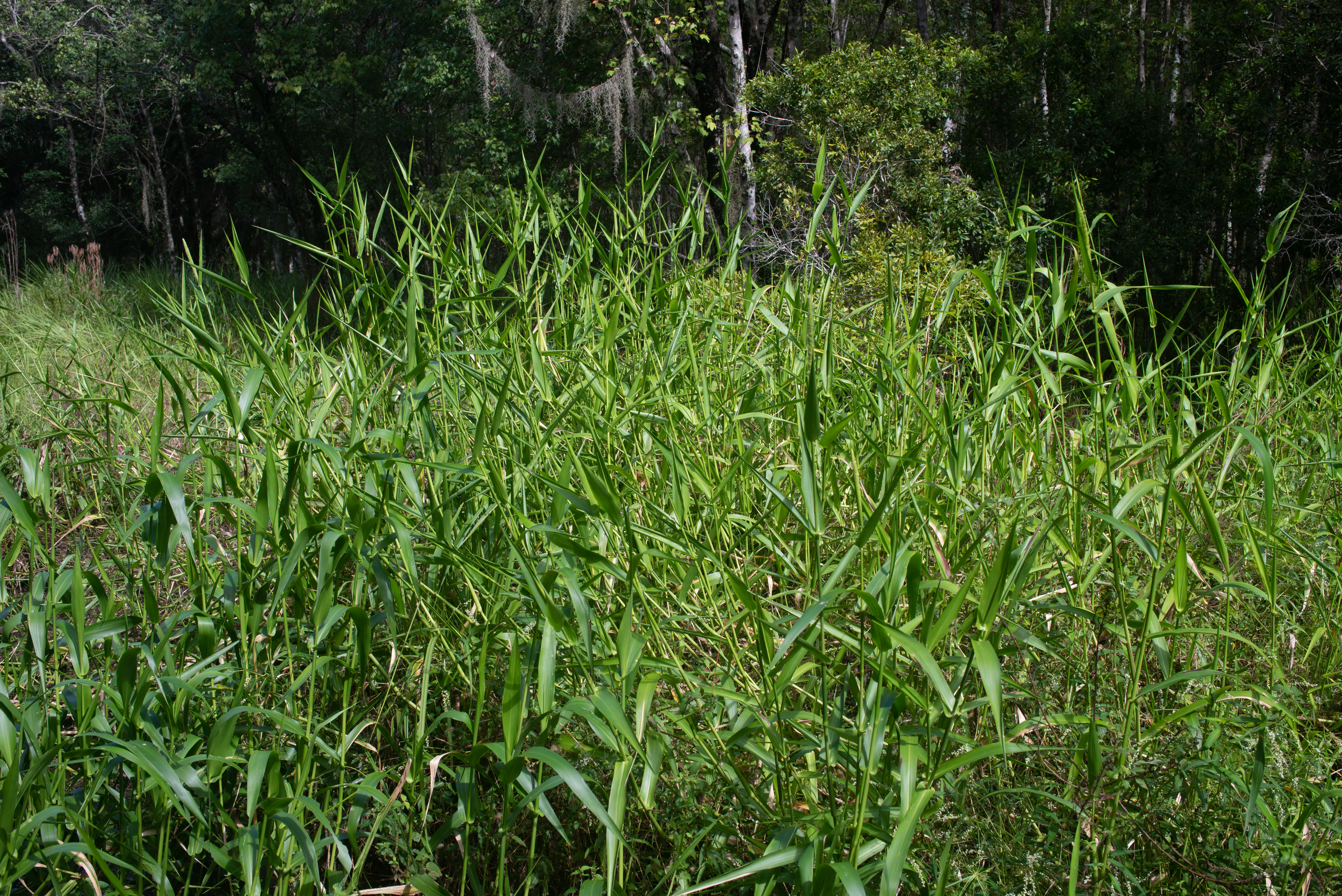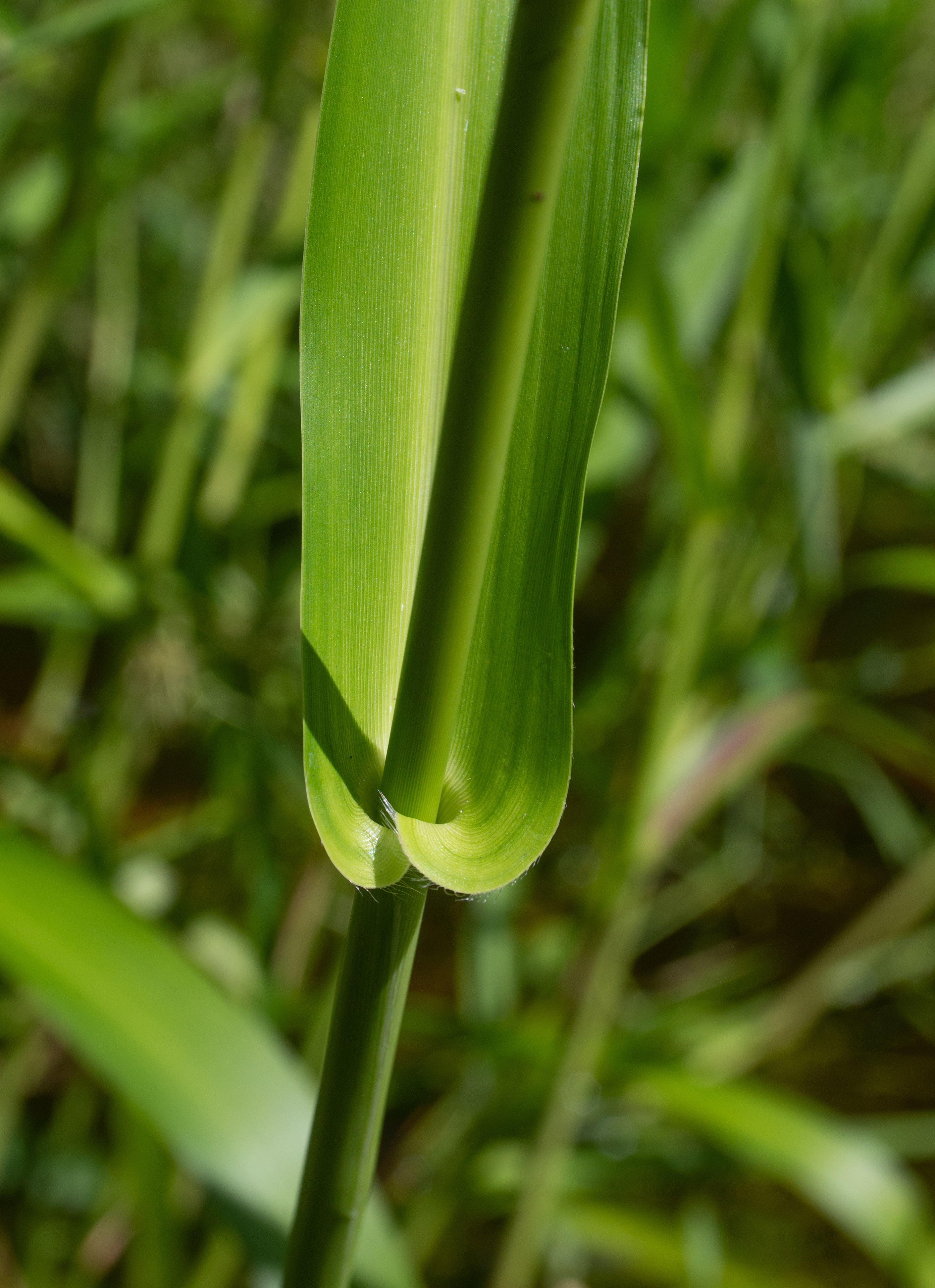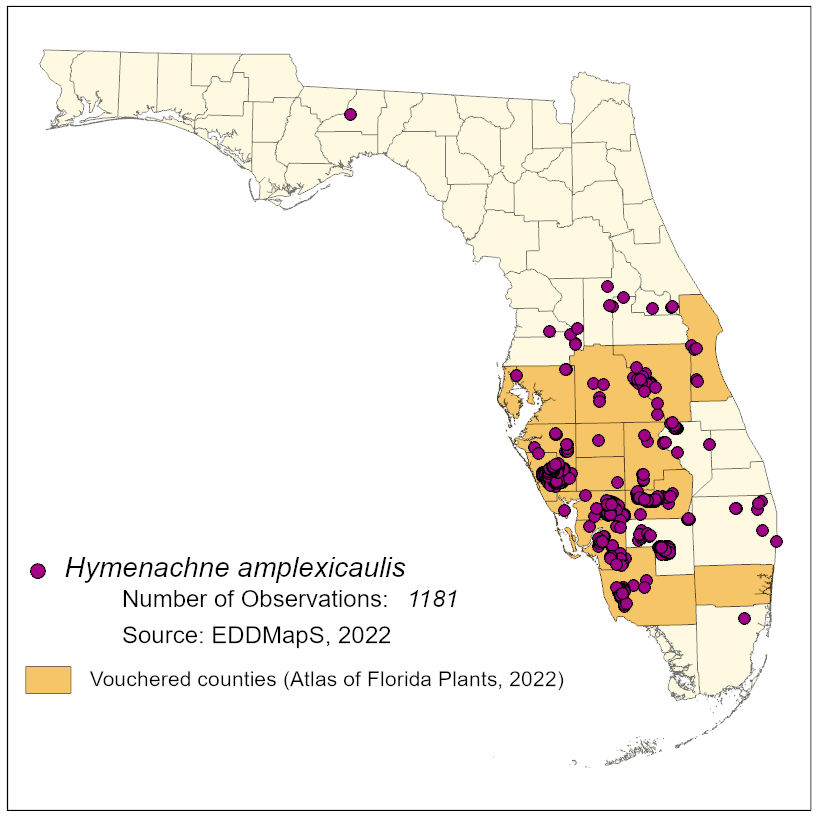Common Name: West Indian marsh grass
Family: Poaceae
Common Synonyms: Hymenachne acutigluma
USDA Hardiness Zone: 8b-10b
Growth Habit: Aquatic, emergent graminoid
Origin: Central America, Mexico, and South America
FISC Category: 1
FDACS Listed Noxious Weed: No
Introduction Date: Earliest Florida herbarium specimen from 1957
IFAS Assessment:


Robust wetland grass ascending to 1 m tall, rooting at the lower nodes. Stems are floating, creeping or ascending. Stems are filled with a white pith (not hollow), unlike most other grasses. Leaf blades are flat, to 35 cm long, cordate at the base and often clasping the stem. Inflorescence a dense terminal panicle.
Invades marshes, river edges and wet pastures
The non-native Myakka bug (Ischnodemus variegatus) was observed feeding on West Indian marsh grass, and acts as a biological control agent. Similar in appearance to native maidencane (Panicum hemitomum).

This species readily grows from seeds and small vegetative pieces. Retreat before flowering to prevent the introduction of additional seeds to the seed bank.
Plant Conservation Alliance, Alien Plant Working Group. West Indian Marsh Grass: Least Wanted. Www.nps.gov/plants/alien/fact/hyam1.htm. Viewed on 26 August 2015.
http://plants.ifas.ufl.edu/wp-content/uploads/files/caip/SP257/Hymenachne_amplexicaulis(SP257-034).pdf
IFAS. 2011. Integrated Management of Nonnative Plants in Natural Areas of Florida. http://edis.ifas.ufl.edu/pdffiles/WG/WG20900.pdf Accessed June 13 2017.